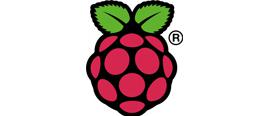Robotics
This list contains resources about robotics.
- ALL
- Teacher guidance
- Experiment
- Game
- External link
Teacher guidance
Programming the robot buggy with the BBC micro:bit
This is a resource aimed at students aged 11-14. It is one of a series that support the use of the BBC micro:bit in the classroom. The pack contains several lesson plans, presentations and student handouts. The first ‘unplugged’ lesson introduces students to how programmable systems work, the second they are walked through how to create a robot buggy. In the extension activity students apply their experience, designing a new robot to meet a need.
Build a robot buggy
In this project students learn to build a robot buggy using a Raspberry Pi. It contains detailed tutorials that cover:
- How to setup a motor controller board with two motors
- How to control motors using Python
- How to build a robot chassis
These activities are aimed at students aged 14-18. The programming examples are in Python, a text based language and require experience to be successful.
Experiment
Robotics: Can we design a robotic arm?
This resource provides a set of videos of a practical investigation aimed at supporting working scientifically in the classroom and relating science to real world experiences, presented by Professor Brian Cox and Dame Maggie Aderin-Pocock. In this video, Maggie joins a teacher demonstrating a robotics-based classroom activity, including set-up, demonstration and the experiment being taught with a secondary age science class.
In the second video, we visit Chris Cieslak at BladeBUG to find out about his work designing robots to inspect wind turbine blades, before visiting Dr Christos Bergeles at King’s College, London, who is developing image-guided surgical robotics. The second and third videos focus on the skills required to work in these areas and offer young people an insight into which subjects and skills they may wish to pursue later in school and beyond. These resources could be a useful tool for careers advisors and form tutors to use during careers discussions. There are accompanying resources available to download.
Game
Self drive challenge
This interactive online self-driving challenge from Siemens can supplement robotics education in computing. It enables pupils to programme a car to drive around a circuit without a driver, the circuits getting more complex as the challenge progresses.
External link
Humans need not apply
This thought provoking video makes a great introduction to the robotics and the threat automation poses to mass unemployment. At 15 minutes, this is a long video and could be used as a flipped learning resource. In the classroom, the first five minutes is enough to summarise the issues.
Introduction to Vectors
This course is an introduction to the vector mathematics. It makes the the leap from theory to practice and demonstrates how vectors can be used to simulate motion in computer programs. Suitable for students aged 16 to 18 years, this resource includes an embedded IDE that allows participants to program vectors in JavaScript.




